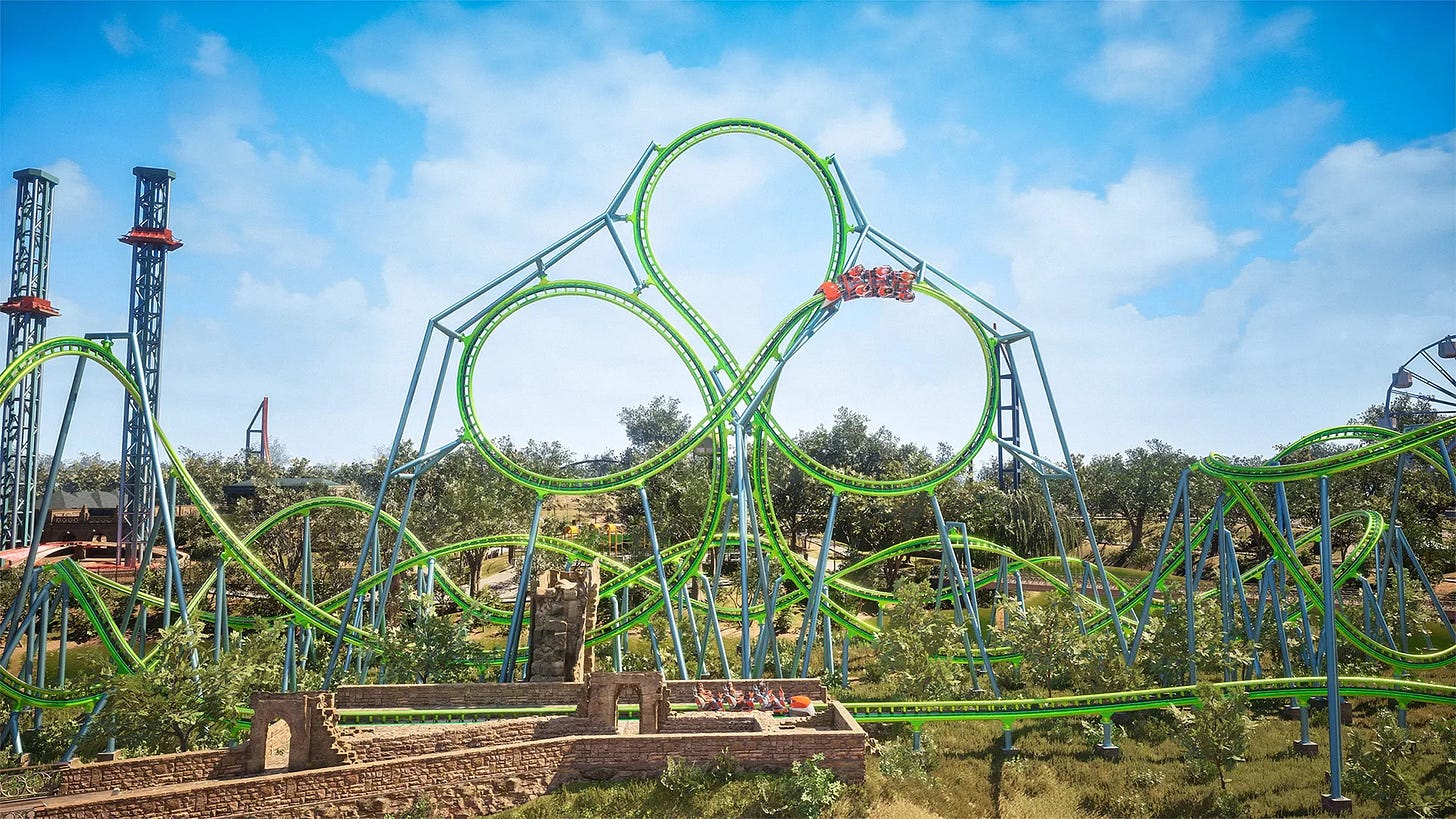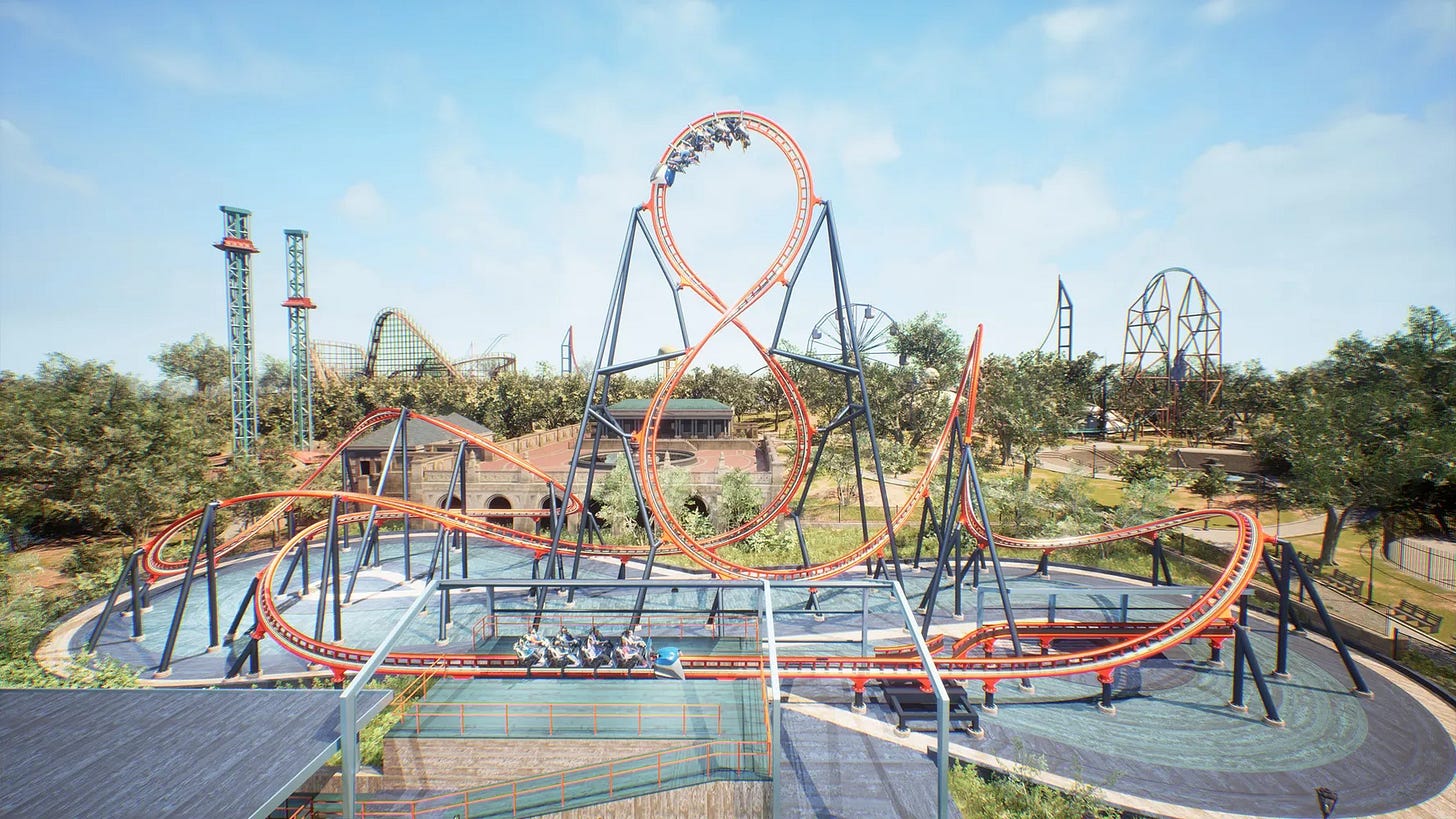For years, roller coasters stayed more or less the same: A train would be lifted up a hill, and gravity would take over from there, propelling it through a series of drops and turns. With magentic and other launch systems gaining popularity, things have been evolving. By eliminating the need for chain lifts and introducing innovations such as switch tracks, recent coasters have been able to do things that previously would have been impossible. Maurer Rides aims to further revolutionize coaster design with its Spike line of attractions. It has already produced a few first-generation Spike rides, including Bolt: Ultimate Sea Coaster, which I got to experience aboard Carnival Cruise Line’s Mardi Gras. But the German manufacturer has ambitious plans to refine its groundbreaking concept. What Maurer is proposing could really throw coasterdom a curve.
Before we jump into where Maurer is heading, let’s step back and take stock of what it has already done with its Spike coasters. Technically, the powered rides aren’t actually coasters. That’s because they use a novel rack and pinion system. Circular gear pinions on the cars rotate along the teeth, or the racks, on both sides of the ride’s single-rail tracks to propel the vehicles. Onboard motors maintain constant traction with the gear drive, even when the vehicles are heading downhill, and therefore never freely coast.
Up to this point, the handful of Spike coasters that have been operating have featured two-passenger, single-car trains that look like motorbikes and offer in-line, straddle seating. They also include interactive controls that give the passenger in front a motorcycle-like throttle as well as a boost button to modulate the speed and acceleration. My ride aboard Bolt was a giddy, fun experience. It was somewhat like a coaster, but was distinctive enough that it would seem to qualify as a new ride genre–or perhaps a coaster(ish) sub-genre.
Since it introduced its Spike rides, Maurer has been tinkering with the concept. In 2023, the company proposed the Spike Fun model, which incorporates more conventional cars with side-by-side seats and is designed to include up to four cars on each train. Interestingly, passengers would be able to recline their seats 45 degrees using onboard joysticks. To date, other than a prototype car that Maurer tested on an existing Spike track, it has not built any Fun rides.
More recently, the company pitched the next iteration of the Spike rides, the ASM Launch. The acronym pertains to “Adaptive Spike Motor.” Say what now?
According to Steve Boney, who handles executive business development for Maurer, engineers designed a system that would add a second set of gear sprockets to the rack and pinion system along with the technology to adjust the slippage and the power between the two gear sets.
“That gives a multiplicative effect, quadrupling the power coming out of the drive unit,” Boney says. “It allows us to have a lot of torque for a bigger train.”
That means Maurer can create high-thrill rides with plenty of acceleration that can accommodate significantly more passengers–or what’s known in the industry as “throughput”–than its current single-car, two-passenger Spike trains. It also means that the rides could include inversions as well as elements and layouts unlike anything previously seen on coasters. (See the Spike Shamrock and KrakeX concept renderings above.)
That’s because the motors used on today’s LSM and LIM magnetic launch coasters can only be placed on straight sections of track. The Spike rides can accelerate on curved track–or really at any point along the most convoluted layout. For that matter, Boney says, the rides could be easily reprogrammed.
“You can have multiple ride profiles on the same track. So maybe this time it accelerates, let's say over a big hill. The next time, it doesn’t make it up the hill and rolls backwards for a little bit,” he notes. “Or you could have Wacky Wednesday, where the trains run backwards the entire day. Or Tiny Tot Tuesday, where the power, and therefore the thrills, would be reduced by 80% so grandmothers and little kids could go on the ride.”
According to the Maurer exec, Spike ASM Launch rides are comparatively less expensive than other launched coasters. And because its control systems can accurately pinpoint the location of every train on the track at all times and have built-in safety features to prevent collisions, it would eliminate the need for block zones. That means parks could dispatch trains more frequently and increase throughput.
Taking gravity and energy calculations out of the equation and introducing a highly flexible ride system opens up all kinds of other possibilities as well. For example, the company envisions gamifying the rides by introducing onboard blasters, audio, and video as well as special effects and other dark ride elements. Boney imagines a Spike ride that could be programmed to respond to the decibel levels of passengers. Maybe the louder riders scream, the faster the train goes. Or if they reach a certain scream threshold, the train launches backwards.
“Your palate is really open here,” Boney says. “You can make this track really any way you want.”






